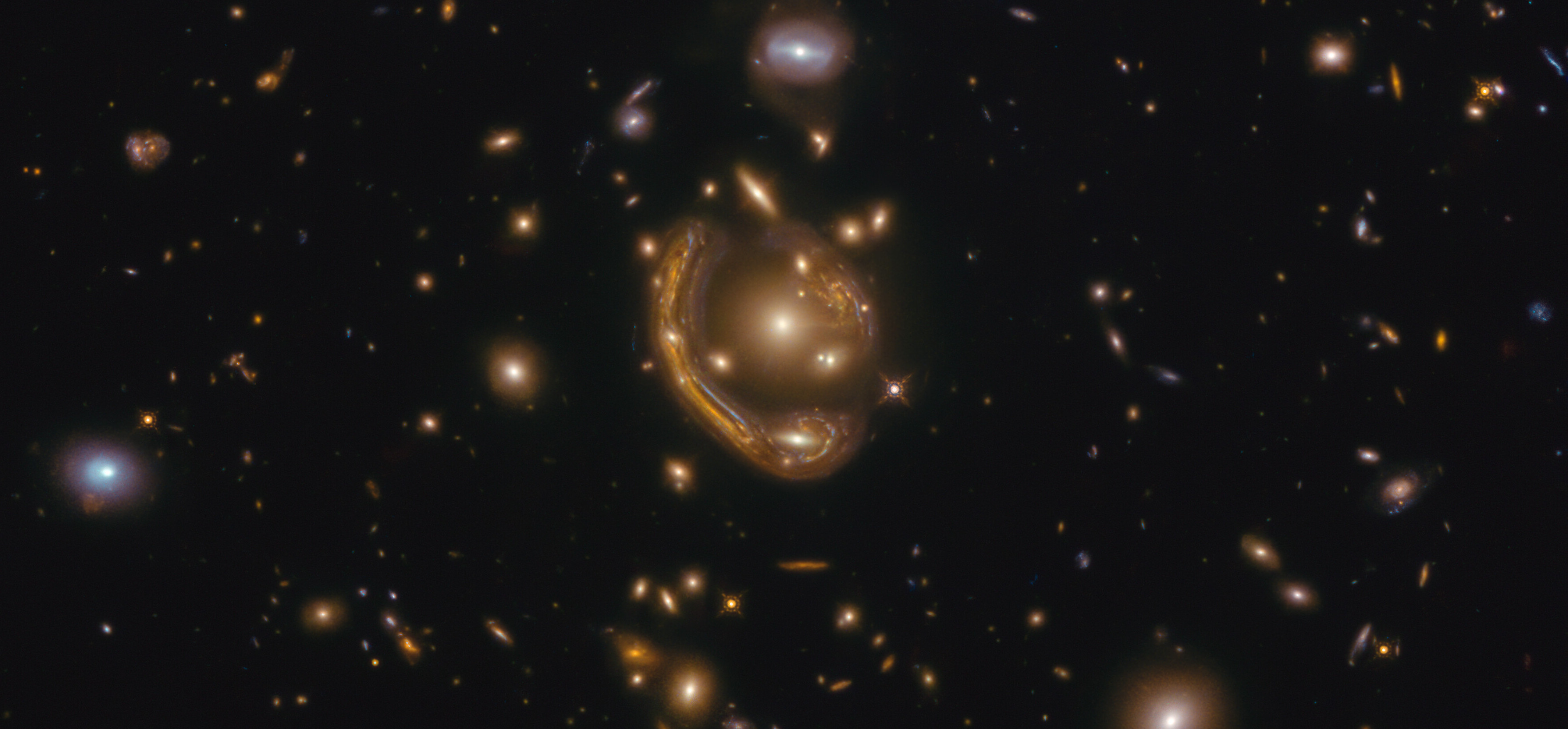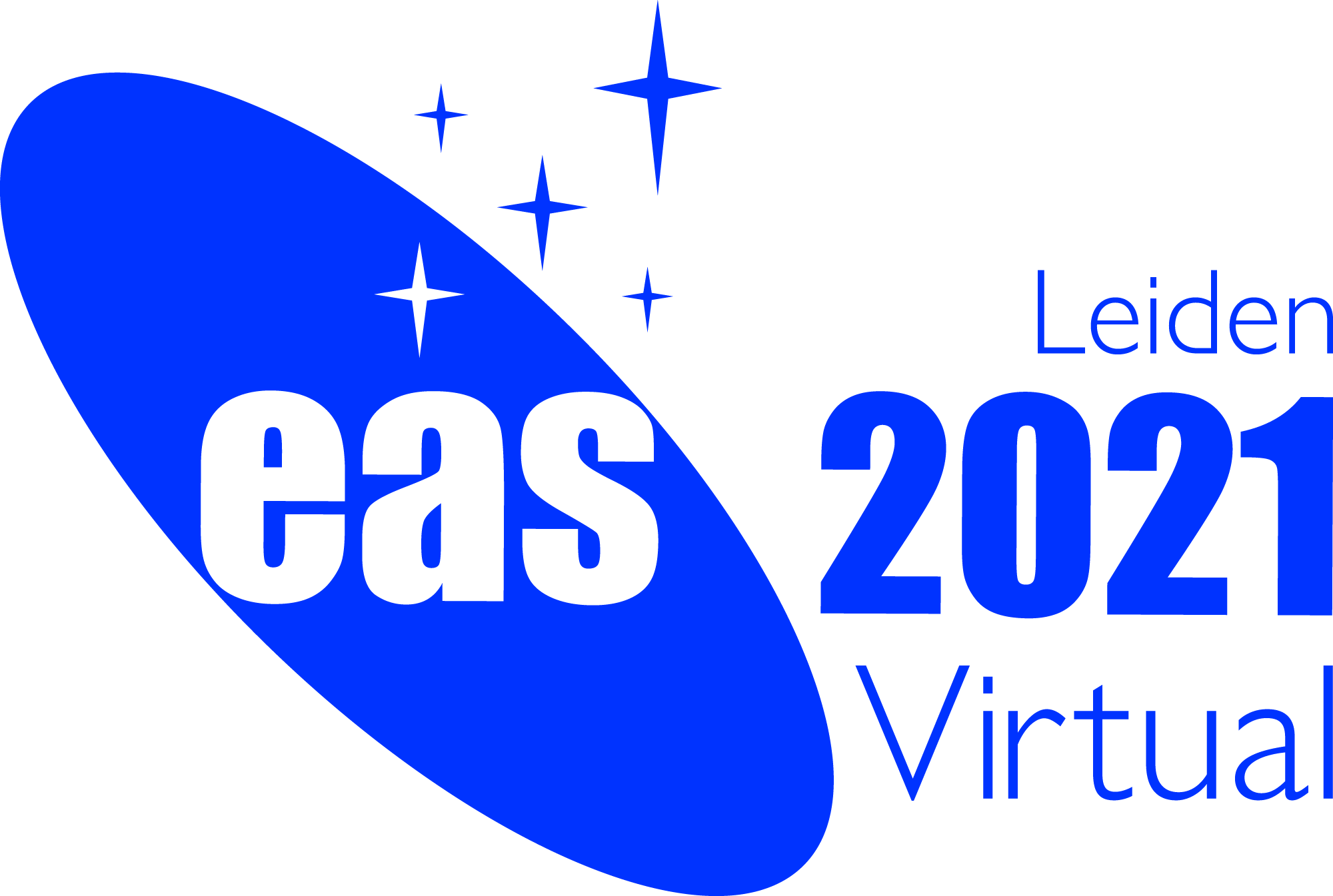Special Session SS16
2 July 2021
Probing New Physics with Gravitational Cluster Lenses

Aims and scope
Today, gravitational lensing represents one of the key and most powerful tools to understand the growth of structure and the expansion of the Universe. Indeed, upcoming space missions to constrain cosmology, e.g. Euclid and the Nancy Grace Roman Space Telescope, are designed to use lensing as one of their primary observational tools. More globally, lensing traces the total matter distribution of the lenses, free of assumptions regarding their dynamical state, but also provides a unique spatially resolved view of the lensed objects. Adding to that the panchromatic imaging of the lenses (X-rays, NIR/MIR, submm/mm, radio) together with spectroscopic and hyper-spectral surveys, can provide complementary information to reveal the complex physics in place in these objects, and address key questions, in particular on the nature of Dark Matter, Dark Energy, possible modifications to General Relativity, galaxy evolution, and feedback processes.
The importance of lensing by galaxy clusters has clearly appeared in recent ambitious Hubble Space Telescope programs (e.g. CLASH, GLASS, the Hubble Frontier Fields Director?s initiative, RELICS, and BUFFALO), and their hyper-spectral follow-ups (e.g. with ALMA and MUSE). The identification of massive galaxy clusters thanks to wide field extragalactic surveys (e.g. Planck, SPT, KIDS, DES, VHS, LOFAR, ACT, HSC) is becoming key to increase cluster statistics (discovering new clusters), to obtain a comprehensive understanding of cluster formation and evolution, and to use them as cosmological probes. With such a wealth of data, and by combining them with the latest cosmological simulations of our Universe, we can now probe cosmological parameters in a competitive way, and test the Lambda-CDM paradigm while tracing the evolution and distribution of substructures in the Universe. This is even more true today with the new eROSITA X-ray observations, and the forthcoming observations with Euclid and the ground-based Vera C. Rubin Observatory. These cluster observations will provide one of the most powerful cosmological probes.
Moreover, the most massive clusters acting as `Cosmic Telescope? offer a unique glimpse to the distant Universe, thanks to the large magnification factors produced over wide areas. As an example, well-calibrated gravitational telescopes allow us to observe well beyond the observational limits of current instrumentation: the most distant galaxies, lensed supernovae and exceptionally single distant stars (through micro lensing).
The future of cluster lenses is even brighter with the continuing HST surveys, eROSITA which has now demonstrated its power of imaging the sky in the X-rays, and in the longer term with the new space missions such as Euclid, Roman, and the James Webb Space Telescope which already has numerous approved programs devoted to cluster lensing, and with new ground-based experiments such as DESI, SDSS-V, Rubin, ASKAP, MeerKAT, SKA, and the CMB-S4 experiment.
In this Special Session, we propose to bring together again observers, modelers and theorists to discuss the latest developments focussing on multi-wavelength and large field of view observations - thus addressing cluster physics, galaxy evolution, cosmology and the magnified Universe up to the Dark Ages.
Programme
- Lensing Mass Modelling & Dark Matter properties
- The Physics of Galaxies and Galaxy Clusters
- Lensed galaxies & Reionization
- Long wavelength view of the Distant Universe
- Lensed Transients & the Hubble Constant
- Cosmography & Simulations
Invited speakers
- Sownak Bose - CfA (USA)
- Esra Bulbul - MPE (Germany)
- Kenda Knowles - UKZN (South Africa)
- Julie Wardlow - Lancaster University (UK)
- ...
Scientific organisers
- Mathilde Jauzac - Durham University (UK)
- Jean-Paul Kneib - EPFL (Switzerland)
- Hakim Atek - IAP (France)
- Marusa Bradac - UC Davis (USA)
- Jose Maria Diego - Instituto de Fisica de Cantabria (Spain)
- Matt Hilton - UKZN (South Africa)
- Eric Jullo - LAM (France)
- Leah Morabito - Durham University (UK)
- Kavilan Moodley - UKZN (South Africa)
- Priyamvada Natarajan - Yale University (USA)
- Jason Rhodes - JPL (USA)
- Keren Sharon - University of Michigan (USA)
- Ian Smail - Durham University (UK)
- Charles Steinhart - Neils Bohr Institute (Denmark)
Contact
Please contact Mathilde Jauzac (mathilde.jauzac @ durham.ac.uk) if you have any questions regarding this Special Session.
Updated on Wed Mar 24 10:01:00 CET 2021
|

 A power cut will shut down all EAS services on Tuesday, 10 January 2017 starting at 7:30 CET.
A power cut will shut down all EAS services on Tuesday, 10 January 2017 starting at 7:30 CET.


